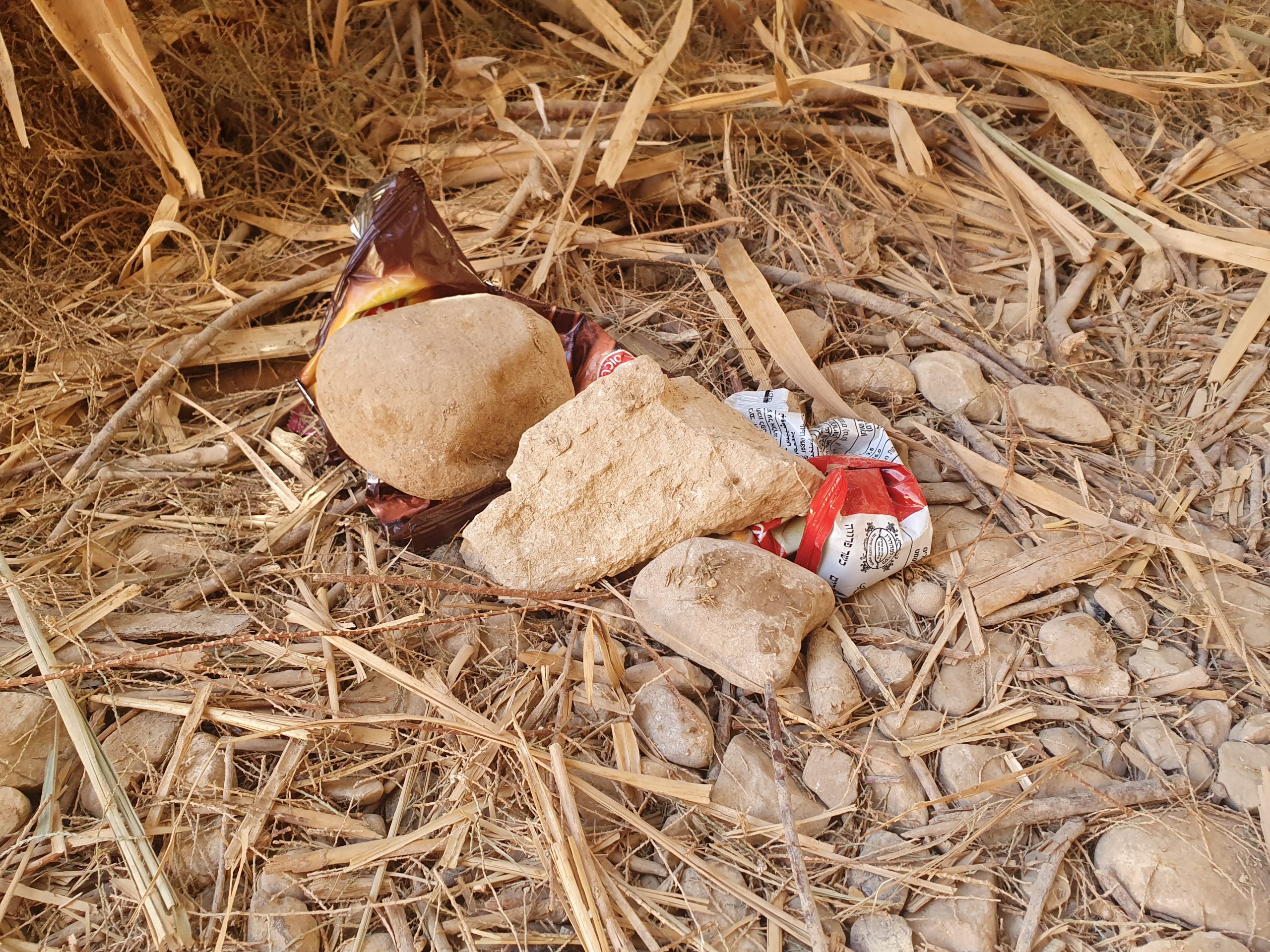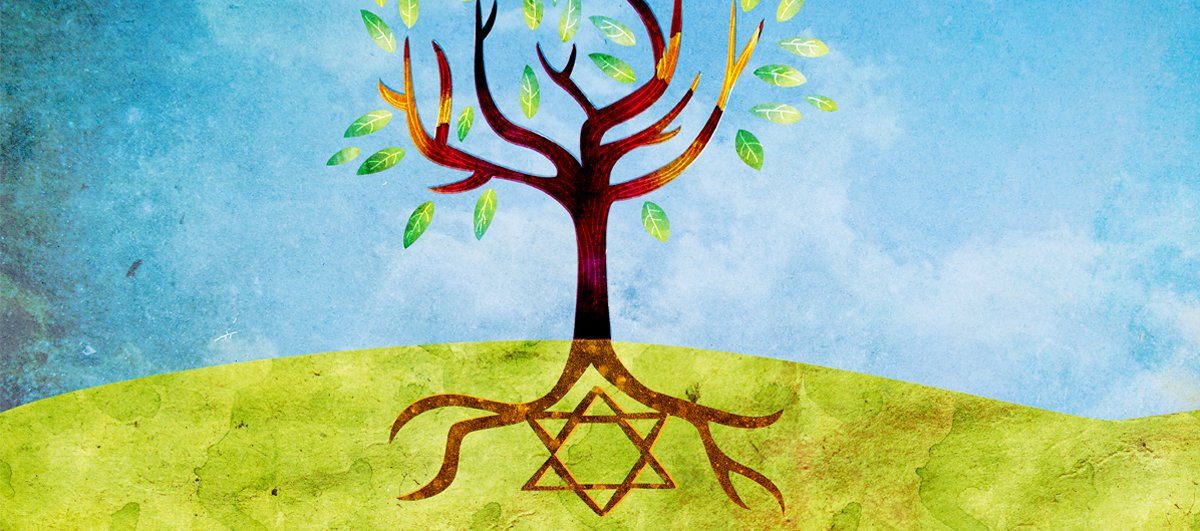What will happen to the trees?
September 6, 2020In hardly any other country of the world has planting trees changed the landscape and the living conditions as much as it did in Israel. In an ongoing research study on the country’s forests, researchers are looking for an answer to the question: “How will Israel manage and preserve its forests in the future?”
In its early years, most of the State of Israel was a sparsely vegetated region with a very low tree cover. Especially further in the south close to the desert edge, the environmental conditions were not particularly favorable for human habitation. However, thanks to unprecedented tree-planting efforts, mainly during the 1950s, 60s, and 70s, the country’s face was utterly transformed. Thriving forests can now be found in large parts of Israel.
In a research collaboration between Keren Kayemet LeYisrael – the Jewish National Fund (KKL-JNF) and the Institute of Plant Sciences at the Agricultural Research Organization, Volcani Center, researchers set out to shed light on how the forests of the country have been developing since their cultivation in the 1950s and 60s.
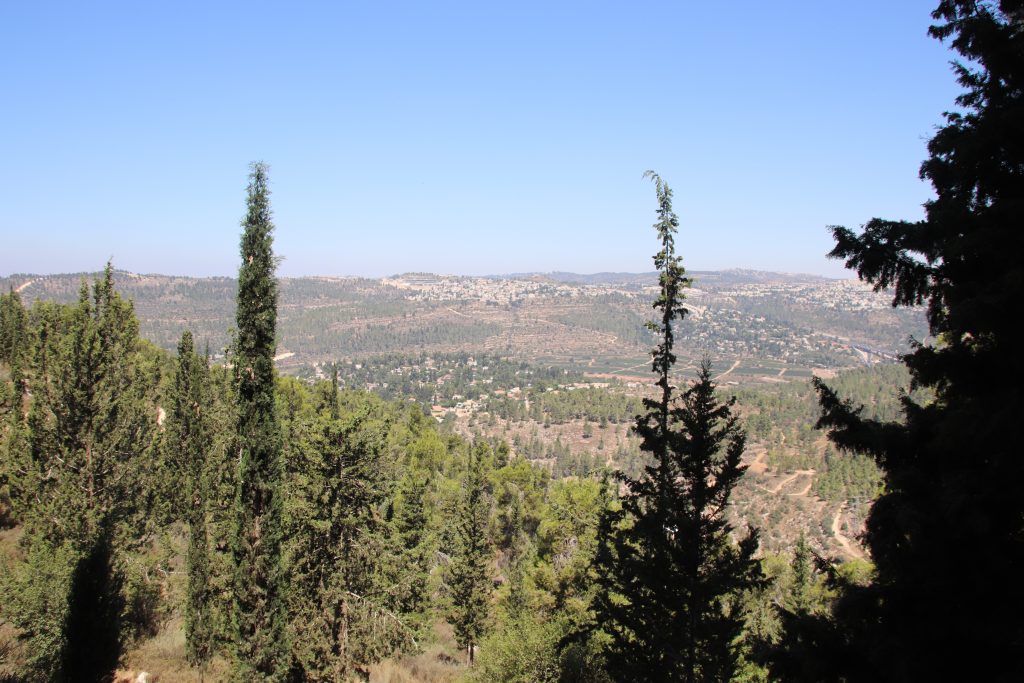
First-generation forests
Most of the KKL-JNF forests that were planted during Israel’s early days are now between 50 – 70 years old, which means they are fully-grown and mature. Some of those forests, which consist predominantly of pine trees, can even be considered aging forests.
“These are all first-generation man-made forests, so we actually don’t really know how they are going to develop and function in the future, or how much longer they are going to persist,” says Dr. Yagil Osem, a plant researcher at the Institute of Plant Science at the Volcani Center and head of the research study. “So the main question we were asking at the outset of the study was ‘what is happening with those first-generation forests? What are the trends? Are they still developing? Are they declining? Are they able to regenerate and establish the next forest generation by themselves?’”, he continues.
According to Osem, when JFN-KKL began planting trees around 70 years ago, the initial idea was to manage the forests as commercial forests, which means that each stand of planted trees has a rotation age of roughly 60-70 years. After that, the trees would be cut down and replanted to establish the next forest generation. “However, around the early 2000s, the whole concept of forest management in Israel changed, and new policies were introduced. The new focus lies on sustainability and the natural dynamics of regeneration and development of the forests. The trees are considered an integral part of a complex ecosystem and are no longer regarded and managed as timber stocks,” Osem explains.
“With the departure from commercial-like forestry, I would say that now, we manage the forests as semi-natural systems that are complex, biodiverse, and capable of self-regeneration.” Ultimately, we want them to turn into resilient, adaptive, and self-sustained systems, which is a big scientific and professional challenge,” he adds.
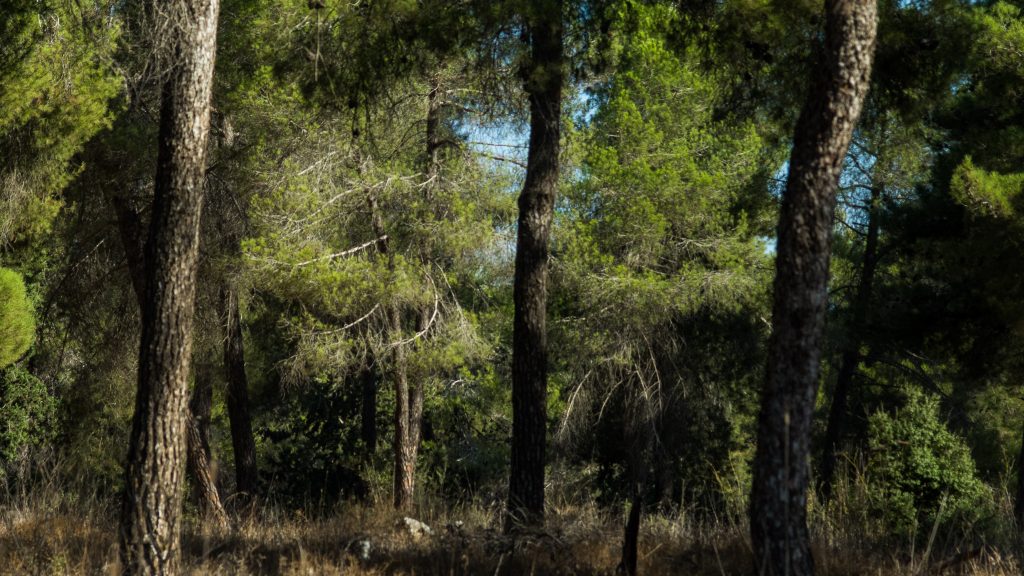
Rain supreme
In order to understand how the planted pine forests have been developing and functioning in the different regions of Israel, the study had to consider various environmental factors, including geology, topography, and climate; most importantly, rainfall patterns. While the center and the south of Israel see comparatively little rain, the study has shown that no other factor impacts the health, growth, and reproduction of the local trees as much as the yearly rainfall – and the differences in rainfall amount throughout the country are substantial.
The researchers monitored a wide range of forested areas, from the northern Negev in southern Israel that receives as little as 250 mm of average annual rain up to the Upper Galilee in the north that receives as much as 850 mm of rain per year on average.
According to Osem, the amount of rain is the “one overriding factor throughout the entire rainfall gradient of Israel,” determining forest development and structure, including the planted trees and the surrounding vegetation like shrubs, vines, and herbs. This includes various aspects such as tree size, the density of tree cover, level of tree reproduction, regeneration and mortality, the number of different tree species (native broadleaf trees: primarily the common oak along with various others), the density and growth of native broadleaf trees, and many more. “Our findings have shown that all of those aspects increase with increasing rainfall amount.”
“For the study, we had a large setup of more than 100 plots of mature pine forest throughout the country, which we monitored by ground surveys along with satellite imagery. “The plots were situated on various bedrock types with individual topographic aspects and at elevations ranging from 40 to 800 meters above sea level”, Osem says. “However, none of these parameters have proven to be as crucial as the amount of rainfall,” he adds.
“Based on our findings, some of the forests in Israel are still growing while others are in a state of stagnation or even declining. Generally speaking, if we look at the environmental conditions, it is quite safe to say that most of the forests in areas that receive more than 600mm of rain per year are still growing. At the same time, many of the forests that grow in areas with less than 400mm of rain per year tend to decline,” says Osem. Forests that grow in between show mixed behavior lacking a clear trend,” he adds.
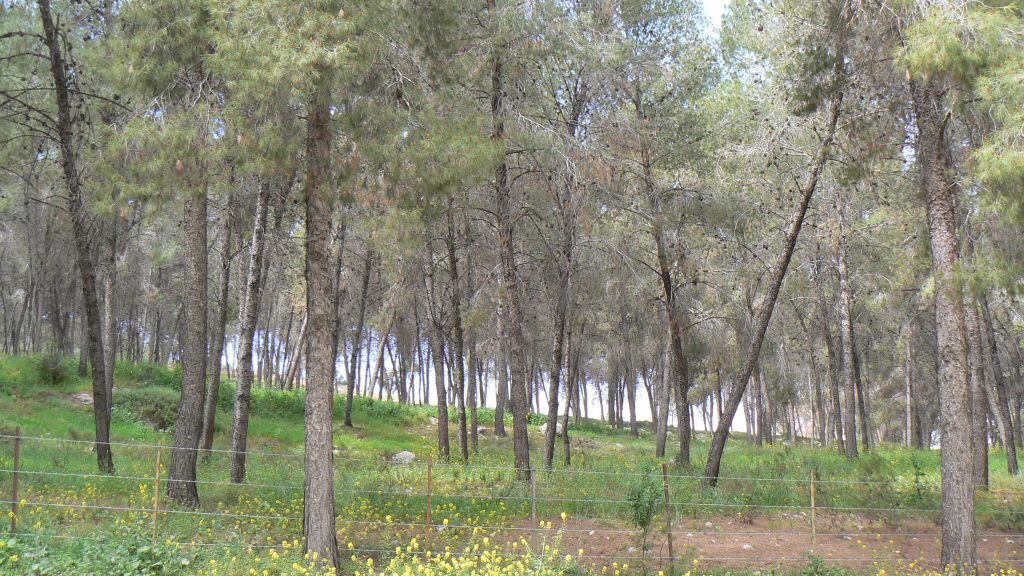
Pine trees: less planting but more natural regeneration
Despite the fact that precipitation turned out to be the single-most-important parameter of the study, the scientists have also found that natural pine tree regeneration cannot just be limited to rainfall.
“At an annual amount of about 400 mm and more of rain, pine trees can regenerate naturally, at which point you very quickly get all different kinds of generation levels mainly depending on bedrock type,” says Osem.
According to Osem, young forests that were planted on soft calcareous bedrock types developed better than those planted on hard bedrock types. This is because soft bedrock can absorb and store water more efficiently than hard bedrock, where the water quickly percolates through the cracks into the deep ground. “The interesting thing we see now in our mature forests is that as the years went by, this relationship has shifted. Forests that were planted on hard bedrock are now still developing, while many of the forests that were planted on soft bedrock are already declining.”
However, Osem stresses that this finding is just one of the many complex variations in forest development that the researchers are beginning to notice. The overall picture is much more complicated and needs further in-depth research.
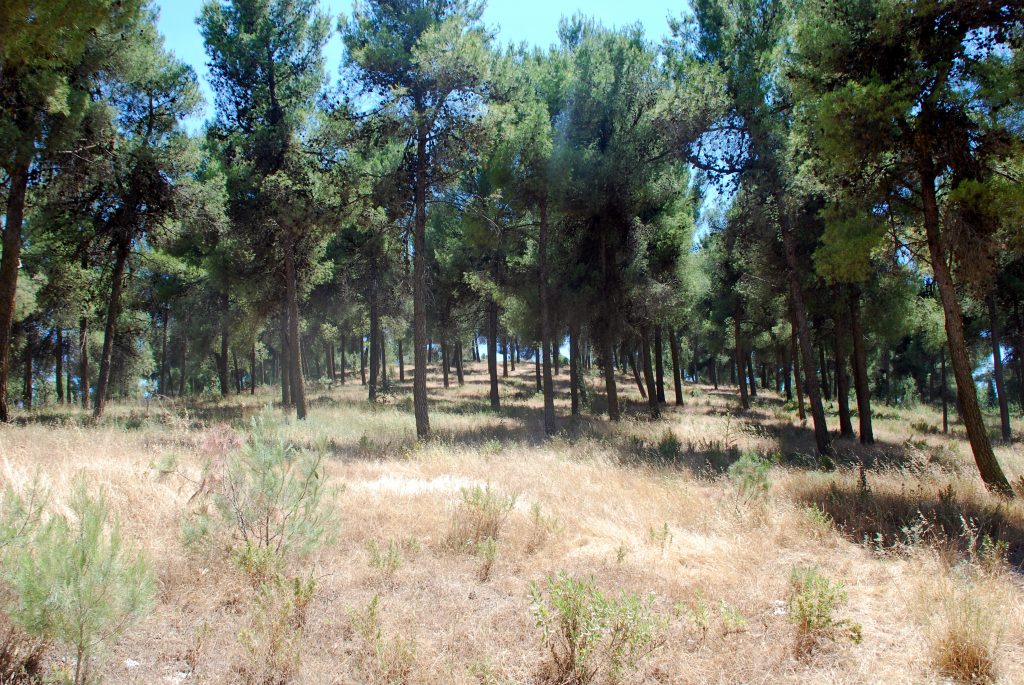
Planting more native broadleaf trees?
According to Osem, JNF-KKL is hardly planting any new pine trees and has almost completely switched to planting broadleaf trees.
“Here in Israel, we have a variety of naturally occurring broadleaf trees like Oak and Pistacia which regenerate naturally within our pine forests in areas above 400 mm of annual rain. Further down south, where the climate is drier, other broadleaf species like Carob and Ziziphus are planted. “The JNF-KKl often does that with the help of water harvesting methods concentrating the water around the trees,” Osem explains.
“We have arrived at a point where we have to decide how we are going to manage our forests in the future, with respect to both human needs and environmental constraints such as climate change and increasing drought. ‘Do we want to recreate pine forests? Do we want to establish different forest structures based mainly on native broadleaf trees or a mixture of conifer and broadleaf trees? Do we want nature to take its course?’
“What I want to highlight,” Osem continues,” is that deciding what kind of forest to establish or how to manage a specific forest area always depends on our objectives and targets. According to the new forest policy of Israel, each forest area should be managed under predefined management objectives. Seven different forestland designations direct these objectives and instruct the management policy. For example, forestland can be managed for recreational activities, specific cultural or natural assets, or other purposes, such as fire break zones. Some of the forest areas are managed specifically for research purposes, like the forest plots we’ve been working with. So depending on the forestland designation, specific management decisions have to be made.”
Osem emphasizes that the country’s forests have entered a transitional phase.
“Forestry in Israel was always about creating new forests. But now we have them. So the goal now is to manage them in the best way possible, which means we have to change our way of thinking and consider our management goals. All of the first-generation planted trees will sooner or later reach their end, some in 10 years from now, others in 30-40 years. But in order for the forests to persist and flourish, we need to manage their transition into their next phase. To do this in the best way, we need to keep monitoring our forests and keep a close eye on their aging processes on the one hand, and their reproduction and regeneration on the other hand,” he concludes.
This ZAVIT article was also published in The Jerusalem Post on 09/06/2020.

